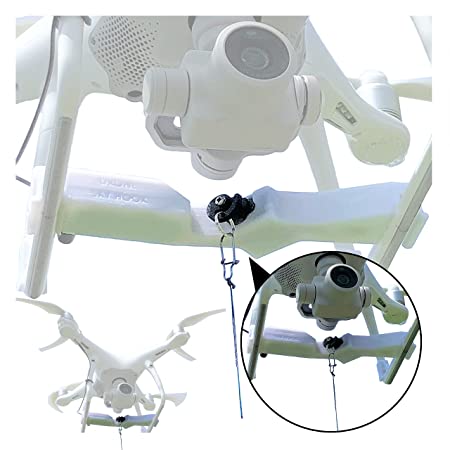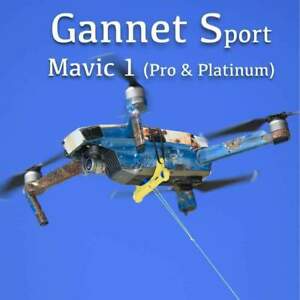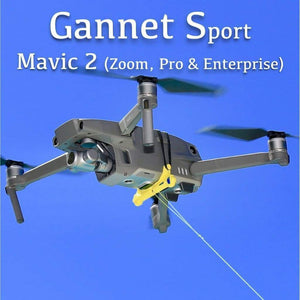
You can use a drone to see the waters surrounding your property if a fisherman is an avid one. Drones are equipped with many features including a GPS positioning and GPS receiver, a GPS transmitter, a GPS receiver, an angle-adjustable camera, and a mechanical payload. There are also fishing lines available that can be used for fishing. They are very stable and secure. One example is the SKY RIGGER drone.
SKY RIGGER is a drone fishing line
The SKY RIGGER fishing line system for drones allows you fly fish and is flexible. It has two rotating leg clamps, which can be mounted to many drone models. The release mechanism features a bayonet-style connection, and a cam lock arm that allows you to quickly open the line clamps. Unlike other drones, the Sky RIGGER requires no batteries and can accommodate all fishing techniques safely.
The SKY RIGGER has an automatic release mechanism for when a fish strikes your fly. The line can be manually released by either your rod or hand. This feature is standard on all SKY RIGGER models. Before purchasing the new SKY RIGGER, it is recommended to purchase a Phantom 3. These are the pros and cons of this new line system.
It features a mechanical payload release
One of the most important features of a good drone is its mechanical payload release. Many drones have a release mechanism that allows the angler to easily remove the fishing line. However, some models do not have a release mechanism. To release the drone, one must "yank" the fishing lines. This can be an inconvenient process, especially for people who aren't comfortable using their hands to release the line.

A payload release mechanism is also an important feature. The drone's payload should be capable to release its line when the fish strikes. It is important to practice catch and release fishing before trying this method, as you can't simply pull the fish to shore and release it back into the water. Several people have reported good results with the DJI Phantom drone. This technology is not yet at the same level as the fishing drones on the market.
It has a GPS positioning system
Rippton is an Australian-Dutch joint venture that specializes technology-oriented products for fishing. Its mission is to increase angler success rates through the development of products that enhance fishing experience. Rippton’s Mobula drone comes with a GPS position system and remote release. The Mobula can hold bait at the surface, provide resistance to kite clips, and be environmentally friendly.
It's lightweight, weighing just 3 pounds, and can fly for up to 18 minutes. It is also equipped with a high-tech GPS system that allows it to control it from up to 2,000 yards away. The range is 1000 meters or half a miles. Intelligent flight modes are also available. Its point of interest feature lets it take high-quality images of its surroundings. You can see great images of fish thanks to its high-resolution digital camera.
It has a failsafe feature
The Aerokontiki fisherman drone comes with a failsafe feature: it monitors the battery level and releases the fishing line when needed. It will return to dry land if the battery runs out and continue its mission. It can be operated anywhere with its industrial-grade flight control system. You can also use this drone in watery areas.

FAQ
What's the difference between quadcopters and hexacopters?
A quadcopter can be described as a quadrotor helicopter with four rotors. It flies the same way as a traditional helicopter. It is equipped with four rotors, each of which can rotate independently. The quadcopter's quadcopter counterpart, the hexacopter, has six instead of four. Hexacopters are more stable and maneuverable than quadcopters.
How can I keep drones off my property?
Drones have become increasingly popular for home surveillance. But they also pose a security threat to privacy. Install motion sensors on your property to detect any unapproved flying objects. This will help you avoid being attacked by drones.
Can I fly my drone indoors?
Yes, you can fly your drone indoors. Your home should be free from obstacles and hazards. You should not fly near windows, doors or heating vents.
Statistics
- According to industry research from ZipRecruiter , there are 10 cities where the typical salary for a Drone Pilot job is above the national average. (dronesgator.com)
- According to ZipRecruiter, the minimum hourly wage of drone pilots is $20. (thedroneu.com)
- Research and Markets predict a growth rate of 51.1% over the next five years. (thedroneu.com)
External Links
How To
How To Fly Drones For Beginners
A drone is an unmanned aerial vehicle that can be remotely controlled and used for surveillance, aerial photography, film production, research, and other hobby purposes. The technology behind drones has been around since World War II. DJI introduced their Phantom series of quadcopters in 2010, but commercial use only began in 2010. Many types of drones have been made available since then, from beginner-friendly models such as the Parrot AR Drone 2.0, to high-end multi-rotor craft such as the DJI Mavic Pro.
There are many options for flying a drone.
-
Remote control - This allows you to control the drone from your hand. There are two main types for controllers: Joysticks or On/Off switches, which can be used to control the drone's flight path.
-
Manual Control – This allows remote operation of the drone via GPS coordinates using a smartphone application. You will need to keep track of where the drone is going and follow the directions from the app.
-
Autonomous Flight – This is when the drone handles all the piloting tasks. It's basically flying autonomously without any human intervention. For the autonomous flight to occur, the drone must have a built-in camera and sensors capable of capturing images and data.
-
Triggered Flight - This method is similar to manual control, except the pilot manually sets up a preprogrammed route, and the drone follows that route until it reaches the endpoint. After the preprogrammed route is complete, the drone will automatically land and return to its base.
-
Landing Gear - Some drones come equipped with landing gear that allows them to land safely if they lose power or run out of battery during flight.
-
Goggles: Some pilots use goggles in order to protect themselves against debris when operating.
-
Camera - You can capture photos and videos with your drone from the air.
-
Obstacles. Some drones can have obstacle avoidance technology that stops them from hitting obstacles.
-
Speed - Some drones can travel at speeds over 40 mph.
-
Battery Life - Most drones are capable of lasting between 20 minutes and three hours, depending on the power that you use.
-
Range - Some drones can travel upto 30 miles depending on their models.
-
Power source – Some drones require external power sources, others require internal batteries.
-
Weight - Some drones weigh less than 1 pound, whereas other models weigh up to 4 pounds.
-
Size - The size of drones varies from small, easily carried devices to more substantial crafts that weigh in excess of 50 pounds.
-
Price - Drones come in a variety of price categories, including high-end models which can run into the thousands and low-cost options that can start at $100.